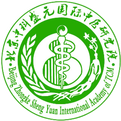Essential Insights: Understanding the True Art of Auscultation in Traditional Chinese Medicine (Sound Diagnosis)
Sound Diagnosis in TCM Sound diagnosis is a method of understanding the nature of a disease based on various sounds produced by the patient, analyzing their pitch, urgency, strength, and clarity. ①High-pitched sound: Indicates that the vital energy is not deficient, belonging to heat syndrome or excess syndrome. ②Heavy and turbid voice: Indicates external invasion … Read more





